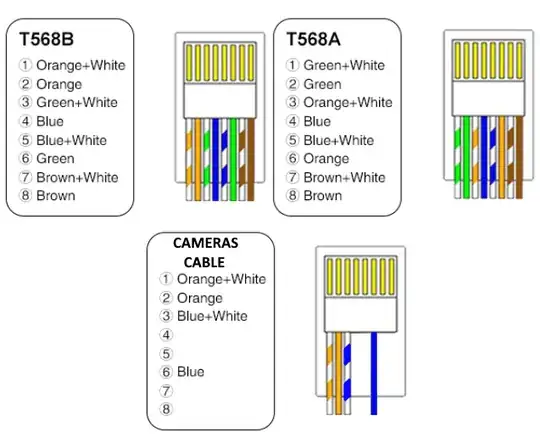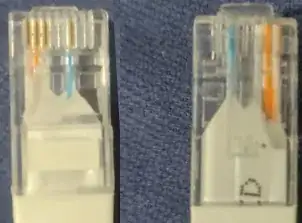It's a case of "penny pinching" on the cable and then using the available conductors to make the cable work for the application in question.
In many four pair telecoms cables*, the pairs are color coded as follows.
- White/Blue
- White/Orange
- White/Green
- White/Brown
The cables typically used for base-T ethernet follow this code, with the white wires additionally having a "tracer" of their partner colour so they can be identified individually.
Similarly a two pair cable will normally have the pairs coded as
- White/Blue
- White/Orange
On an RJ series connector, traditionally the pairs straddled each other, with the centre pair being pair 1, then pair 2 straddled pair 1, pair 3 straddled pair 2 and so-on. This, along with the design of the connectors meant plugging a smaller plug into a larger socket would mate in a sensible manner, but it wasn't a great design from a signal integrity point of view.
T568A modifies the traditional telco layout for better performance in high bandwidth applications. The first two pairs remain in the centre, providing backwards compatibility with one and two line voice systems, but the third and fourth pairs are moved to the side. T568B further swaps the second and third pairs, it's not clear to my why this swap happened.
10BASE-T and 100BASE-TX require two pairs, but instead of using the first and second pairs, they conventionally use the second and third pairs. I presume the original intent of this was to allow voice and Ethernet to co-exist on the same cable (though in practice, many Ethernet controllers short out the unused pairs, so you would still need a special cable or adapter to do this). It also has the interesting effect that a cable wired with T568A on one end and T568B on the other acts as a crossover cable.
So someone is trying to pinch pennies, they pick up some cheap two pair cable. Ethernet requires the second and third pairs, but their cable only has the first and second pairs. So they use a non-standard wiring to make it work.
* This is consistent with the "25 pair code" used in the USA, but also consistent with the "20 pair code" used in australia and the "30 pair code" used in the UK. I dunno about other countries.

